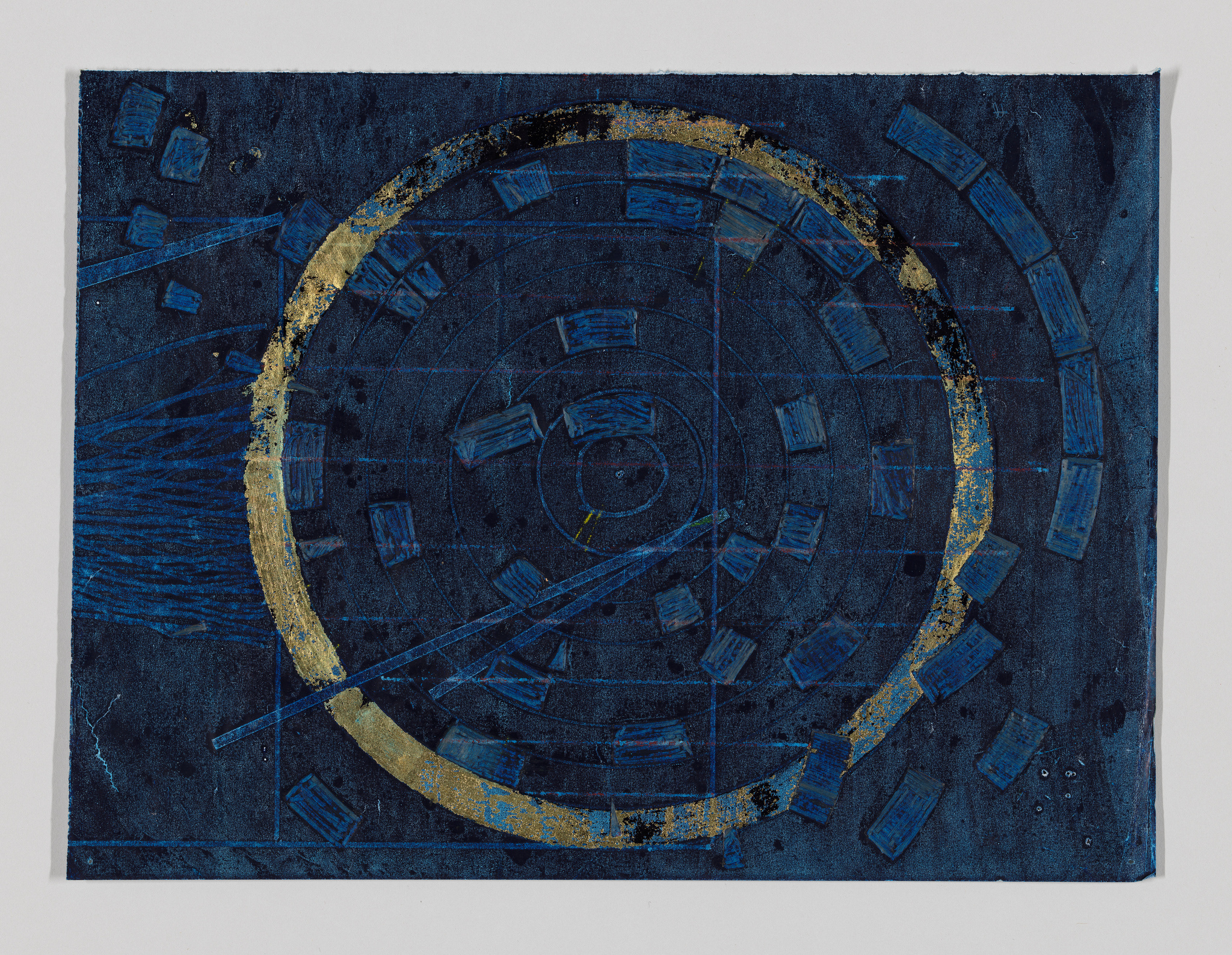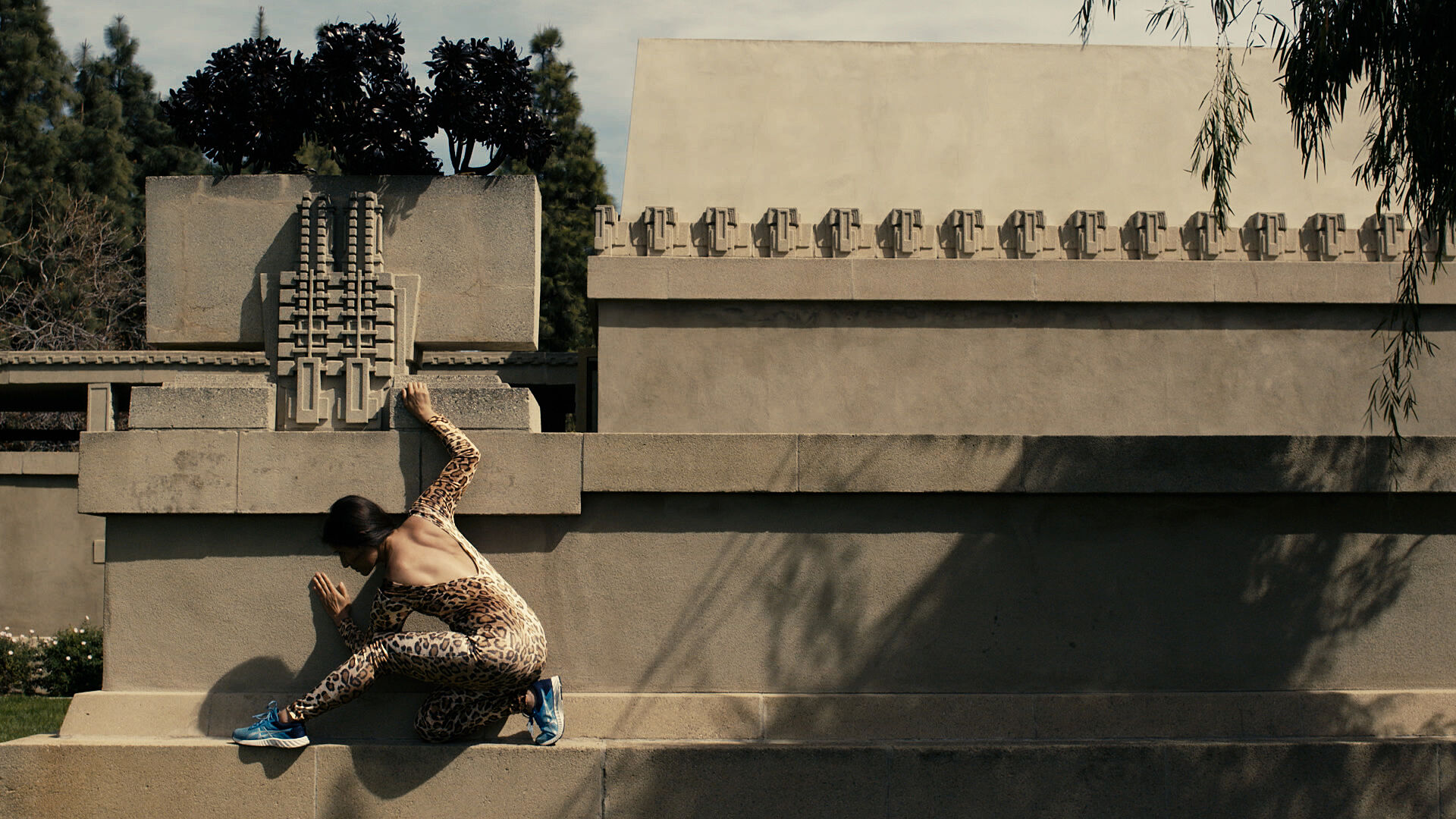Ronny Quevedo
July 3, 2018
0:00
Ronny Quevedo
0:00
Ronny Quevedo: My name is Ronny Quevedo.
My interest in games started through going to indoor soccer leagues in New York City. The majority of them were coordinated and held by migrant workers here in the city from South America and Central America.
Narrator: Mixing materials like contact paper and gold leaf, Quevedo creates overlays of modern and ancient gaming fields.
Ronny Quevedo: Over the years, I've become interested on how the field becomes a place of communal exchange, a place of competition, but also a place of cultural pride. I've been looking at fields of play in the pre-Columbian era.
A lot of the information behind them is deduced, a lot of it is taken from other manuscripts or different things that exist, because a lot of that information is lost. My interest in that space, in the space that I came across as a child, is really about looking for your point of origin, really thinking about heritage in this very malleable way, and looking at ancestry in this really abstract way that is not fixated on one sole position of generation, or one sole position of tradition or even worship.
Narrator: In the sculpture Ulama, Ule, Olé, Quevedo repurposes milk crates.
Ronny Quevedo: My use of milk crates stems from looking at an urban landscape and materials that have been appropriated for multiple uses.
I use the milk crate, in this case, as a hoop the way it would be used in a basketball game by incorporating it into a hoop that would be used for pre-Columbian game. So, the conflation of time is really interesting to me, in which something very, very modern, plastic, can also work well with something that's pre-Columbian. For me, I'm really interested in how both landscapes of an urban space and a ruin can exist at one time.


